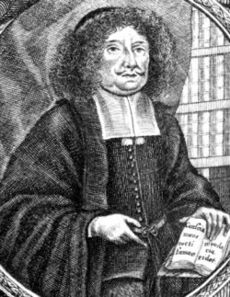Phlogiston theory facts for kids

The phlogiston theory was an old idea that scientists used to explain how things burn. For a long time, people thought that anything that could burn contained a special substance called phlogiston. When something burned, they believed this phlogiston escaped into the air. What was left behind was called a "calx" (like ash).
This theory seemed to make sense because when wood or coal burned, the ash left behind weighed less than the original material. Scientists thought this was because the phlogiston had left the substance. They also believed phlogiston explained the heat and light given off during burning.
Contents
What Was Phlogiston?
Phlogiston was not a real substance. It was an imaginary element that scientists thought was in all things that could burn. The word "phlogiston" comes from a Greek word meaning "to set on fire."
Early Ideas About Burning
Before the phlogiston theory, people had many different ideas about what happened when things burned. The ancient Greeks, for example, believed that fire was one of the four basic elements of the world.
Who Proposed the Theory?
The idea of phlogiston was first suggested by a German alchemist named Johann Joachim Becher in the late 1600s. Later, another German scientist, Georg Ernst Stahl, developed the theory further in the early 1700s. He made it very popular among scientists for many years.
Why Did Scientists Believe It?
The phlogiston theory helped explain several things that scientists observed:
- Burning materials: When wood or coal burned, they seemed to lose something, leaving ash. Phlogiston was thought to be that "something."
- Metals changing: When metals were heated, they would often change into a powdery substance (a calx). Scientists thought the metal lost its phlogiston.
- Air's role: They noticed that things needed air to burn. They thought air could absorb the phlogiston that escaped from burning materials.
How Phlogiston Was Disproven
Even though the phlogiston theory was popular, some careful experiments started to show its problems.
The Role of Mass
One big problem was with mass. When metals were heated and turned into a calx, the calx actually weighed more than the original metal. This was the opposite of what the phlogiston theory predicted! If phlogiston escaped, the calx should weigh less.
Discovery of Oxygen
The biggest challenge to phlogiston came from the discovery of oxygen. Scientists like Joseph Priestley and Carl Wilhelm Scheele discovered different gases in the 1770s.
The French chemist Antoine Lavoisier performed very careful experiments. He showed that burning was not about losing phlogiston, but about a substance combining with oxygen from the air. He proved that when something burns, it combines with oxygen, and the total mass stays the same. This was a huge step in understanding chemistry.
Legacy of Phlogiston
Even though the phlogiston theory was wrong, it was an important step in the history of chemistry. It was one of the first attempts to explain burning in a scientific way. It also led to many experiments that helped scientists discover new elements and understand how chemical reactions really work. Today, we understand that burning is a chemical reaction called combustion, where substances react with oxygen, releasing energy as heat and light.
Images for kids
See also
 In Spanish: Teoría del flogisto para niños
In Spanish: Teoría del flogisto para niños


